
Herring are various species of forage fish, mostly belonging to the family of Clupeidae.
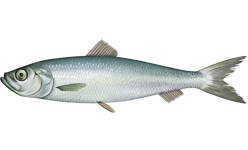
Atlantic herring is a herring in the family Clupeidae. It is one of the most abundant fish species in the world. Atlantic herrings can be found on both sides of the Atlantic Ocean, congregating in large schools. They can grow up to 45 centimetres (18 in) in length and weigh up to 1.1 kilograms (2.4 lb). They feed on copepods, krill and small fish, while their natural predators are seals, whales, cod and other larger fish.

Sprat is the common name applied to a group of forage fish belonging to the genus Sprattus in the family Clupeidae. The term also is applied to a number of other small sprat-like forage fish. Like most forage fishes, sprats are highly active, small, oily fish. They travel in large schools with other fish and swim continuously throughout the day.
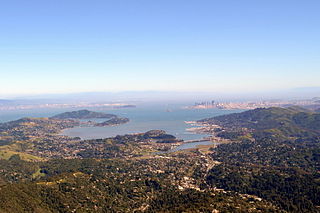
Richardson Bay is a shallow, ecologically rich arm of San Francisco Bay, managed under a Joint Powers Agency of four northern California cities. The 911-acre (369 ha) Richardson Bay Sanctuary was acquired in the early 1960s by the National Audubon Society. The bay was named for William A. Richardson, early 19th century sea captain and builder in San Francisco. It contains both Strawberry Spit and Aramburu Island.

The whitesaddled catshark is a species of catshark, and part of the family Scyliorhinidae. It is found on the upper continental slope of the western central Atlantic Ocean, off the coasts of Honduras, Panama and Colombia, between latitudes 22° N and 9° N, at depths between 274 and 457 m. It can grow to a length of 47 cm (19 in). The reproduction of this catshark is oviparous but otherwise, little is known about its biology.

Herring are forage fish in the wild, mostly belonging to the family Clupeidae. They are an important food for humans. Herring often move in large schools around fishing banks and near the coast. The most abundant and commercially important species belong to the genus Clupea, found particularly in shallow, temperate waters of the North Pacific and North Atlantic Oceans, including the Baltic Sea, as well as off the west coast of South America. Three species of Clupea are recognized; the main taxon, the Atlantic herring, accounts for over half the world's commercial capture of herrings.
Symphoricarpos hesperius, called the trailing snowberry or creeping snowberry, is a North American species of trailing shrubs in the honeysuckle family. It is native to southwestern Canada and the northwestern United States
Ischnodemus hesperius is a species of true bug in the family Blissidae. It is found in North America.
Labops is a genus of plant bugs in the family Miridae. There are about 13 described species in Labops.
Pityotrichus is a genus of typical bark beetles in the family Curculionidae. There are at least three described species in Pityotrichus.
Ataenius texanus is a species of aphodiine dung beetle in the family Scarabaeidae. It is found in the Caribbean Sea, Central America, and North America. It is closely related to Ataenius hesperius. which tends to live farther West.
Ataenius hesperius is a species of aphodiine dung beetle in the family Scarabaeidae. It is found in North America. It is closely related to Ataenius texanus, but it tends to live farther West.
Doldina is a genus of assassin bugs in the family Reduviidae. There are about eight described species in Doldina.
Labops hesperius, the black grass bug, is a species of plant bug in the family Miridae. It is found in North America.
Gymnochthebius is a genus of minute moss beetles in the family Hydraenidae. There are more than 60 described species in Gymnochthebius.
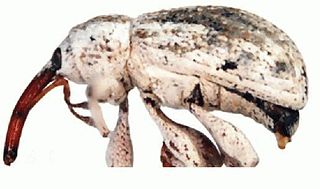
Epimechus is a genus of true weevils in the beetle family Curculionidae. There are more than 20 described species in Epimechus.

Dysdercus mimulus is a species of red bug in the family Pyrrhocoridae. It is found in the Caribbean, Central America, and North America.
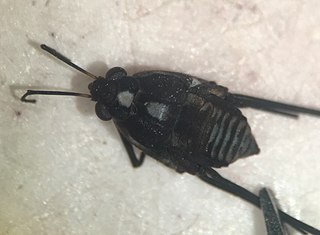
Metrobates is a genus of water striders in the family Gerridae. There are about 16 described species in Metrobates.

Cymatia is a genus of water boatmen in the family Corixidae. There are about six described species in Cymatia.
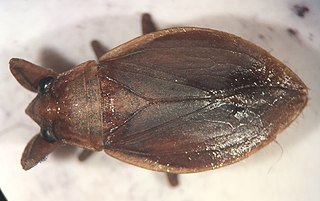
Abedus immaculatus is a species of water bug in the family Belostomatidae. It is the only Abedus species found in the eastern United States, occurring throughout Florida north into Georgia and west along the Gulf Coast to Mississippi.











